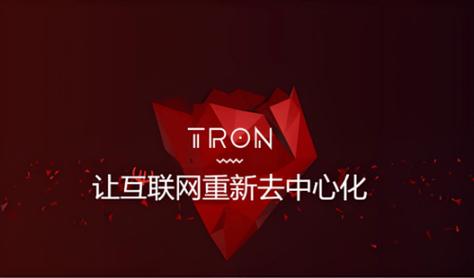As the cryptocurrency landscape evolves at an unprecedented pace, the spotlight continually shifts toward more efficient and powerful mining solutions. Bitcoin mining, the backbone of the decentralized currency network, now demands hardware that can balance raw computational strength with energy efficiency. Among the plethora of mining machines available, Innosilicon’s T4 model has consistently maintained its position as a top contender. But what exactly propels the T4 to the forefront in a market saturated with mining rigs? Let’s delve into this intersection of technology, market trends, and the dynamic nature of Bitcoin mining to uncover the answer.
Bitcoin mining, a cryptographic process securing transactions on the blockchain, relies heavily on specialized hardware known as ASICs (Application-Specific Integrated Circuits). Unlike general-purpose GPUs previously dominant during Bitcoin’s infancy, ASIC miners like the Innosilicon T4 are designed exclusively for hash computations essential to securing the blockchain and earning mining rewards. The T4 shines because it offers a compelling blend of performance—up to 67 TH/s hash rate—with comparatively low power consumption, approximately 2200 watts. This balance is a game changer for individual miners and hosting services where electricity costs form a significant portion of operational expenses.
Importantly, Innosilicon’s T4 addresses a critical niche: affordable yet efficient mining hardware. While heavyweights like the Antminer S19 Pro boast higher hash rates upwards of 110 TH/s, their steep price tags put them beyond the reach of many aspiring miners. The T4 strikes a middle ground, often hailed as the “efficient workhorse” of mid-tier miners, making it an ideal entry point for both new miners and growing mining farms. With the Bitcoin network’s current difficulty level and fluctuating market prices, miners are constantly seeking machines that reduce the risk of diminishing returns, and the T4’s cost-effectiveness fits neatly within this calculus.

Hosting mining machines—outsourcing the physical infrastructure, maintenance, and cooling—has become increasingly popular amid widespread concerns about energy consumption and regulatory environments. Mining farms around the globe provide robust hosting facilities tailored for ASIC miners like the T4, where optimal temperature controls and continuous monitoring maximize operational uptime. For investors who may lack the technical know-how or favorable home energy rates, hosting services act as a vital bridge to earning cryptocurrency passively. The T4’s manageable power envelope makes it highly suitable for hosted environments, reducing risks posed by overheating or electrical constraints compared to more power-hungry counterparts.
Of course, Bitcoin is not alone in the cryptocurrency universe. Ethereum (ETH) remains the second largest digital asset by market capitalization, although its shift to proof-of-stake consensus via the “Merge” has significantly diminished traditional mining activity. This tectonic shift has invigorated the altcoin mining space, with miners refocusing efforts on coins such as Dogecoin (DOGE) and other proof-of-work currencies. Interestingly, Dogecoin itself, originally a meme coin, now commands serious mining attention because it’s merge-mined in tandem with Litecoin. This dual mining opportunity enhances profitability but requires rigs capable of versatility—factors that influence the broader mining hardware market. While the Innosilicon T4 is primarily designed for Bitcoin’s SHA-256 hashing algorithm, the overall ecosystem’s tilt toward ASIC specialization underscores the necessity of selecting miners purpose-built for specific coin algorithms to retain competitive edge.
Mining rigs constitute the heart of any mining operation. They amalgamate ASIC chips, cooling solutions, power supplies, and enclosures into compact, high-density packages optimized for hash generation. The T4’s design focuses on optimizing thermal dissipation to ensure peak performance even in sustained mining sessions. Coupled with intelligent firmware management, the miner supports real-time frequency adjustments and fault tolerance, critical for maintaining uptime. For large-scale operations—often called mining farms—the choice of mining rig affects scalability and economic viability drastically. Farms deploying thousands of units leverage the T4’s blend of efficiency, durability, and price point to expand mining capacity without exponentially increasing power costs or hardware failures.

Cryptocurrency exchanges, the marketplaces where mined coins are traded, also indirectly impact miner decisions. The more liquid and robust an exchange is, the more appealing mining becomes as investors can swiftly convert coins to fiat or other assets. Yet, market volatility persists; soaring Bitcoin prices can incentivize rapid hardware acquisition, while price downturns pressure miners to optimize operating costs. This cyclical market behavior propels constant innovations in miner technology and hosting strategies. Companies specializing in mining machine sales and hosting must stay ahead of these cycles, tailoring solutions around hardware like Innosilicon’s T4 to meet the shifting demands of miners seeking longevity and profitability.
Emerging trends further complicate the future landscape. Regulatory shifts, environmental scrutiny, and alternative consensus protocols challenge miners to adapt or pivot. Nevertheless, Bitcoin mining’s inherent design demands sustained computational power, and machines like the Innosilicon T4 remain pivotal players. Their balance of high hash rate, lower energy consumption, and affordability ensures they will keep mining accessible to a diverse range of users—from individual hobbyists and startup farms to well-capitalized hosting operations.
In conclusion, the future of Bitcoin mining will undoubtedly feature more sophisticated and energy-conscious hardware. Yet, the Innosilicon T4 endures as a testament to pragmatic design—offering miners a reliable, efficient, and cost-effective tool in a competitive, volatile ecosystem. As the mining sector continues to evolve, embracing both innovation and operational realities, machines like the T4 exemplify how to strike harmony between power, price, and performance. For those poised to navigate the intricate web of cryptocurrencies, mining machines, and exchanges, the T4 remains a beacon of consistent opportunity amidst change.
Leave a Reply